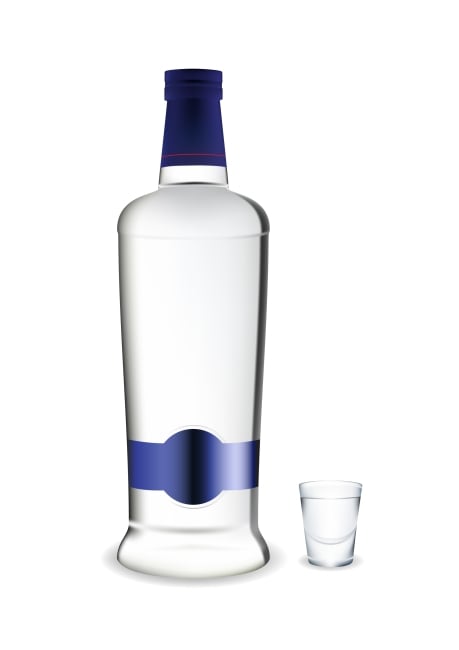You have /5 articles left.
Sign up for a free account or log in.

iStock
Stanford University on Monday announced a new policy banning large containers of hard alcohol from undergraduate housing and events. The policy bans containers 750 mL and larger of distilled liquor, spirits and hard alcohol -- a standard-size bottle of vodka or whiskey -- for all undergraduates on campus, including students who are over 21.
The university says the policy is aimed at reducing “the availability and accessibility of hard alcohol” and the “high-risk behaviors” that can accompany heavy drinking, including those that might lead to sexual assault. But victims’ advocates argue that the policy -- which comes after the university was the site of a high-profile rape case in which alcohol was consumed -- puts the onus on victims to avoid drinking rather than on would-be attackers to not assault.
“These policies don’t work,” Anna Voremberg, managing director of the organization End Rape on Campus, said. “They don’t prevent sexual assault. Schools definitely have a responsibility to prepare students for safe drinking habits. That’s important. But putting such policies in the context of preventing sexual assault misses the mark. Alcohol doesn’t cause rape. It’s a weapon used by rapists to rape women.”
In March, Stanford’s president, John Hennessy, wrote in a letter to students that “hard alcohol is implicated in a variety of problems that continue to be present in the Stanford community,” including alcohol poisoning, sexual assault and relationship violence.
“We need new solutions,” he wrote. “Solutions that reduce risk for students, that reduce the pressure on students to drink and that meaningfully change our culture around alcohol.”
The university said its new policy is an outgrowth of Hennessy’s letter. In that letter, the president cited research from the National Institute on Alcohol Abuse and Alcoholism that estimates nearly 100,000 college students experience “alcohol-related sexual violence” each year. A paper presented earlier this year at the Research Society on Alcoholism’s annual meeting concluded that “increases in daily estimated blood alcohol content were associated with a greater likelihood of being a victim and with being a perpetrator of coercive sex.”
At the same time, there’s little evidence that indicates campus alcohol policies do much to prevent sexual violence, and the research on campus drinking bans, more generally, is mixed.
"The research on limiting availability and access focuses on reducing alcohol outlet density and increasing alcohol taxes and costs," Ralph Castro, director of Stanford's Office of Alcohol Policy and Education, said in a Q&A about the new policy. "The approach of limiting container size accomplishes both of these empirically proven strategies. "Most alcohol retailers only sell large-volume containers, 750 mL and above. Only select retailers sell hard alcohol containers smaller in volume than 750 mL. Therefore, the outlet density of establishments that sell hard alcohol around campus will be greatly reduced."
According to a 2001 survey conducted as part of Harvard University’s College Alcohol Study, students at colleges with complete drinking bans are 30 percent less likely to be “heavy episodic drinkers” and more likely to abstain from alcohol. Among students who still drink, however, heavy drinking is just as common as among their counterparts at colleges without alcohol bans.
The report has other caveats: the survey found a correlation between banning alcohol and lower rates of heavy drinking, the authors wrote, but that the lower rates could be due “to other factors, such as self-selection of students to these schools.” The report also focused on colleges that have banned all alcohol, not just hard liquor.
Dartmouth College similarly banned hard alcohol last year. A recent survey conducted by the student newspaper, the Dartmouth, found that 85 percent of the 1,745 students who responded said they had consumed hard alcohol since the ban went into effect.
Sending a Message to Women
Victims’ advocates argue that such polices do little to prevent sexual assault and address the behavior of rapists, and instead emphasize telling potential victims, especially women, to change their own behavior in order to avoid being assaulted. They worry that such policies might push students to drink more off-campus and at fraternity parties.
In a series of tweets Monday, Michele Dauber, a law professor at Stanford, criticized the university for adopting a partial hard alcohol ban before taking other preventative safety measures, such as installing lighting in the darkened area on campus where a woman was sexually assaulted behind a dumpster last year.
That rapist, a former Stanford swimmer named Brock Turner, was convicted of the assault but famously received a relatively light sentence for the crime, sparking outrage across the country. In a letter that helped the judge decide his sentence, Turner blamed the assault on him being drunk. “I’ve been shattered by the party culture and risk-taking behavior that I briefly experienced in my four months at school,” Turner wrote.
“The new policy is like the university giving in to Brock Turner’s assertion that he somehow fell victim to this drinking culture, and that’s not the case,” Voremberg, of End Rape on Campus, said. “He raped her. It’s not alcohol’s fault he raped her.”
Dartmouth and the University of Virginia faced similar criticism when they announced alcohol bans last year.
As part of their criticism of the policy, advocates pointed to a webpage that Stanford included alongside its announcement of the new rules. Called “Female Bodies and Alcohol,” the webpage explains how alcohol affects women differently than men. The page originally stated that “research tells us that women who are seen drinking alcohol are perceived to be more sexually available than they may actually be,” and that “men who think they have been drinking alcohol -- even when they have only consumed a placebo -- feel sexually aroused and are more responsive to erotic stimuli, including rape scenarios.”
The webpage is not new, and the information is based on a webpage created by Cornell University, but it received renewed attention this week after the university linked to it from the new policy. The above passage has since been removed.
“Many universities have specific programs to educate women about alcohol,” Lisa Ann Lapin, a spokeswoman for Stanford, said. “At Stanford specifically, the majority of our emergency medical calls related to alcohol involve women and this was posted quite some time ago to help with education efforts.”








